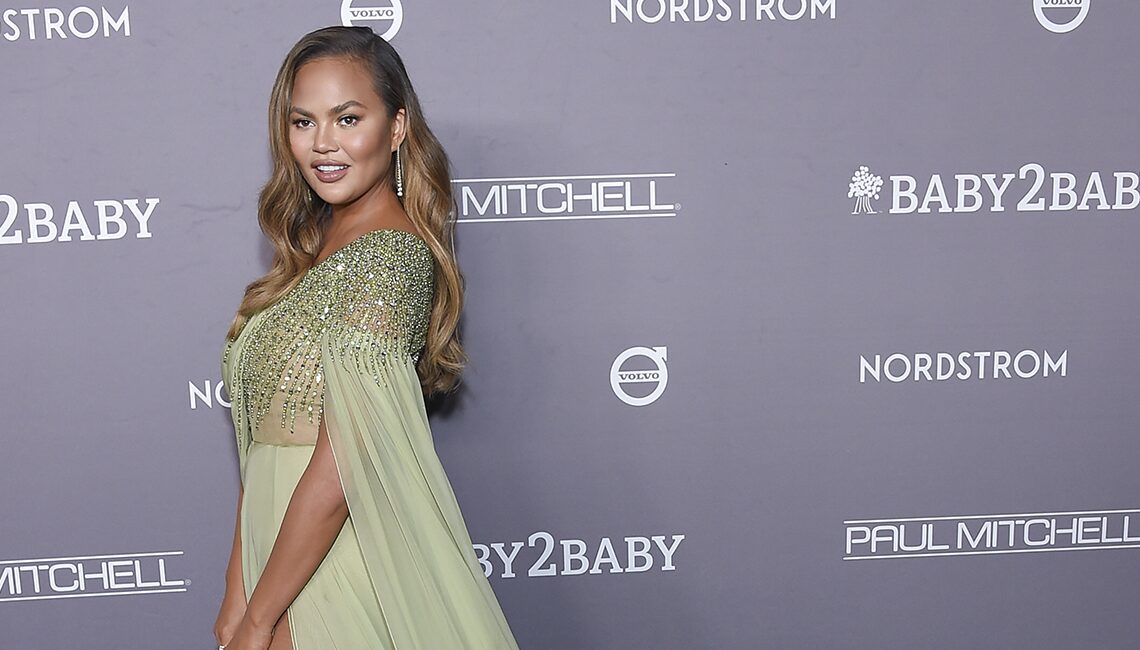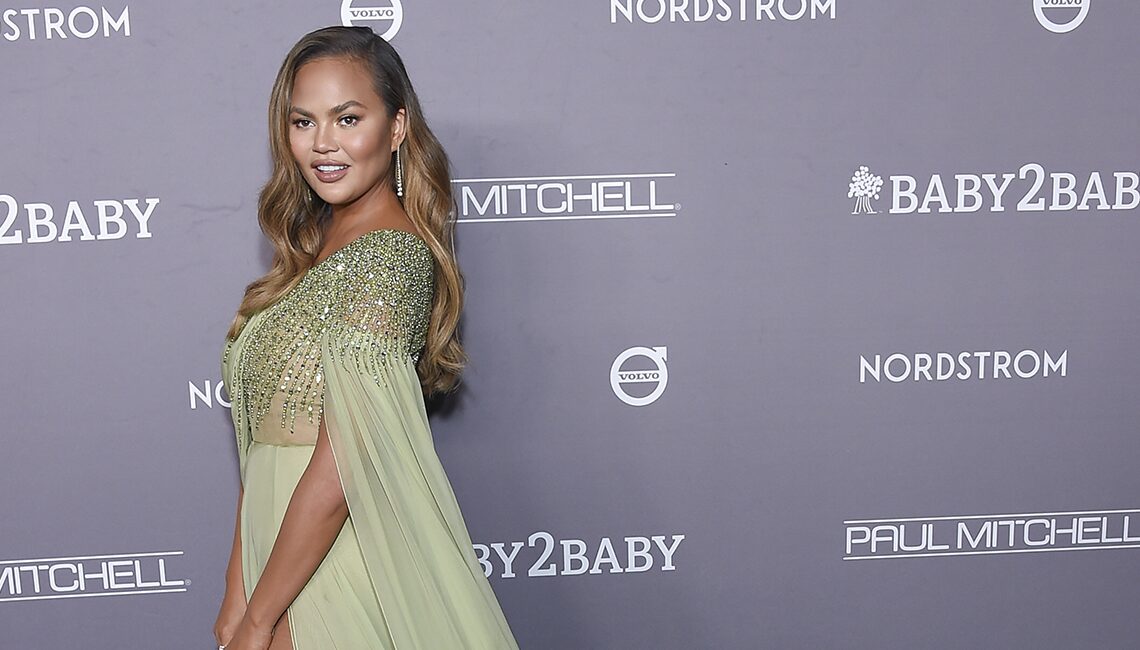Last year was one filled with changes for everyone. But in the world of celebrity, that meant changing up appearances and being honest about it. From breast reductions and buccal fat removal to facelifts and botched CoolSculpting, 2021 saw more celebs being transparent about their cosmetic surgeries over the past year. But while we generally learn about these celeb cosmetic procedures after the fact (when they’re fully recovered), there is a lot of treatment research, doctor prep, and downtime many interested patients don’t get to see.
So, if you’re considering trying a procedure, it’s essential to know all the information to make an informed decision. That’s why we tapped leading NYC-based, board-certified plastic surgeon, Dr. Darren Smith, to learn what these A-list procedures entail and the results you can expect.
Chrissy Teigen’s Buccal Fat Removal
Chrissy Teigen has always been open about her various plastic surgeries. And 2021 was no different. In October, the cookbook author took to Instagram stories to reveal that she had buccal fat removal and liked the results. What is the procedure?
“This procedure is designed to slim the lower facial third: the cheeks below the cheekbone and near the sides of the mouth,” said Dr. Smith. “It’s a relatively straightforward procedure that involves making a small incision on the inside of the cheek, identifying the fat pad, and removing it. It takes under an hour, can be done under local anesthesia, and has no visible external scarring. As a result, you can get back to a desk job almost immediately.”
There is some controversy surrounding this procedure: volume, in general, makes faces look youthful, and hollowness has the opposite effect. Therefore, some are concerned that buccal fat removal can cause a prematurely aged appearance. However, Smith added, “This is where the artistry comes in: removing enough fat to achieve the desired aesthetic goal but not so much that facial hollowing occurs.
Marc Jacobs’ Facelift
Designer Marc Jacobs is used to putting his creations on the runway. But, it was his plastic surgery that was on full display over the summer. Jacobs shared on Instagram that he got a facelift using the hashtag #livelovelift. While not a new procedure, the facelift is the most powerful form of facial rejuvenation. There is over a decade removed from someone’s appearance with 10-14 days of downtime. But, the key to success with this procedure is an individualized approach that accounts for the patient’s individual anatomy and age-related changes.
“Most of the ‘heavy lifting’ in these cases should come from modifications to the deeper tissues of the face so the skin can be gently draped over this rejuvenated foundation,” said Dr. Smith. “This approach avoids a windswept or ‘alien’ look to achieve a refreshed, natural result. That’s why combining a facelift with fat transfer (fat grafting) can further enhance results by restoring facial volume lost over time.” Smith added, “Not only do the soft tissues of the face deflate and descend over time but the facial skeleton changes as well. Facial fat transfer addresses both issues.”
Linda Evangelista’s CoolSculpting
At one time, Linda Evangelista graced magazine covers and runway shows as one of the most coveted supermodels in the world. But, she’s stayed out of the spotlight recently after admitting she had a botched CoolSculpting procedure. This, understandably, made those considering the noninvasive body contouring procedure nervous even though it’s one of the original and best-known modalities. So, what went wrong, and what should we know?
“The theory behind CoolSculpting is that suction is used to suck the planned treatment area into an ‘applicator,’ which cools the tissue to a temperature at which fat cells freeze and die,” said Dr. Smith. “While some may achieve satisfactory results with the treatment, CoolSculpting has real risks. One of the most problematic possible complications is paradoxical adipose hyperplasia (PAH), which is when (for incompletely understood reasons) fat grows instead of shrinks. This can lead to hard, unsightly bulges of fat.”
As an expert in liposuction, Dr. Smith is frequently sought out to reverse the effects of PAH. He employs advanced liposuction techniques, including VASER ultrasound and BodyTite radiofrequency when appropriate to break up stubborn fatty deposits and tighten loose skin. While the cause of PAH is not definitively known, there are some theories.
“We know from reconstructive plastic surgery that negative pressure environments (vacuums) stimulate tissue growth by making cells in the negative pressure environment secrete chemicals associated with blood vessel growth and wound healing,” said Dr. Smith. “This is the basis for one of the most widely used wound-healing devices on the market, the ‘Wound VAC.’ It is possible that similar chemical signaling is caused by the vacuum produced by the CoolSculpting device.”
Khloe Kardashian’s Nose Job
It can be challenging to have the Kardashians admit to their plastic surgeries. But, Khloe admitted in June that she did get a nose job, explaining her changing look over the years. The nose job, or rhinoplasty, is one of the most popular and powerful ways to transform one’s facial appearance. Even minute changes can have dramatic effects on facial form and balance. What’s involved exactly?
“On a technical level, rhinoplasty involves the manipulation of the underlying bone and cartilage structure of the nose to support the skin and soft tissue in a manner consistent with the desired aesthetic outcome and functional requirements of the nasal airway,” said Dr. Smith. “Plus, I like to use 3D imaging to simulate planned changes with the patient. This modality lets a patient communicate their ideal result, and lets me, in turn, discuss what may or may not be anatomically possible.”
Kandi Burress’ Breast Reduction
In August, Real Housewives of Atlanta star Kandi Burruss opened up about her breast reduction surgery on her NEW YOUTube series, Body Work. And it’s a procedure that can be life-changing as it can tremendously improve physical comfort and aesthetic appearance. “Of all the procedures we perform, breast reduction has one of the highest patient satisfaction rates,” said Dr. Smith.
So, what can patients expect? There are essentially two components that come into play when designing a breast reduction.
“First is the skin incision pattern (and resulting scar pattern),” said Dr. Smith. “This can either take the form of a ‘lollipop’ or an ‘anchor.’ The lollipop incision (also known as a ‘vertical breast reduction’) results in a scar around the areola and down the front of the breast. The anchor pattern (also known as an ‘inverted-T breast reduction’) adds a horizontal scar in the fold under the breast to the lollipop pattern.”
Smith tends to use the vertical pattern for smaller reductions and the inverted-T for larger reductions.
The second component of designing a breast reduction is the blood supply (called the ‘pedicle’) to the nipple. During these procedures, the breast is essentially reshaped around the nipple and its blood supply from the chest wall.
“There are many ways to design the pedicle,” he added. “In most cases, I prefer a ‘superior medial’ pedicle, in which the blood supply comes from the top of the breast towards the midline of the chest. This tends to offer aesthetically pleasing fullness and enhanced cleavage. The operation takes 2-3 hours under general anesthesia, and I recommend a week off after these procedures before returning to work.”
All breast reductions result in permanent scars, but these tend to fade over time. “While this is a very personal decision, we have found that most patients are very happy with the trade-off of scars for improved shape and decreased breast weight,” said Dr. Smith.












